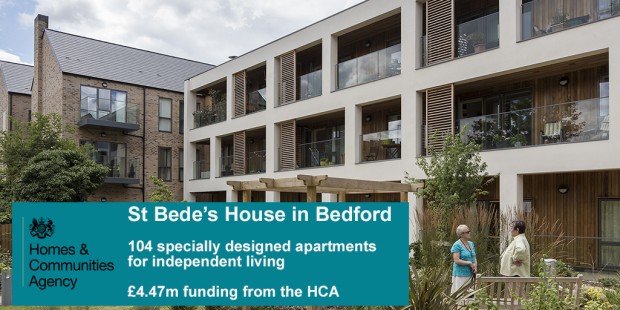Some of the best housing in the country is attracting our ageing population and we are seeing a shift in how older persons housing is viewed and approached by developers.
You would have to live on the moon not to notice that we have an ageing population in England - a term affectionately given to all of us as we age gracefully. It means society has changed, and with that comes diverse range of needs, including housing needs. It’s no longer about downsizing but about rightsizing and good design appears to be at the very heart.
The recent Housing Design Awards 2015 crowned a scheme in Derbyshire as its overall winner. It wasn’t designed for older people to live in specifically, but more than half the occupants are over 50 and the penthouse is owned by a 90 year old.
The Housing Design Awards are probably the highest profile awards in the sector. Government-supported schemes have usually been shortlisted and many have previously won.
The HAPPI award recognises homes designed for older people, based on 10 principles of good design. We are seeing that more and more of the Design Award submissions are HAPPI ones, suggesting that developers are taking this market seriously when they plan, design and deliver their schemes. For example, in 2015 around half of the total submissions supported HAPPI principles of good design.
Many of the HAPPI principles are recognisable from good design generally - good light, ventilation, room to move around and good storage - but they do have particular relevance to older persons housing which needs to both offer an attractive alternative to the family home, and be able to adapt over time to meet changing needs. Good design can support older people to live longer at home, and reduce the potential health and wellbeing costs associated with inappropriate housing.
One of the main shifts happening is the move away from the stereotype of sheltered housing. Housing for older people covers a broad range of products and housing types. Anything from age-restricted mainstream housing, to a retirement living block close to town centre amenities, to large-scale retirement villages with a range of amenities on site, and extra care schemes for people with a range of care needs. Not forgetting of course the well-designed penthouses such as those in the Housing Design Award winning scheme and the continued popularity of bungalows in many parts of the country such as these breakthrough bungalows in Cambridgeshire.
So what’s the future? Aspirational living for an ageing population.
Developers are starting to realise that the older demographic is a potentially untapped market. This group of people can often buy with cash and are ready and able to move. It also doesn’t have to mean a huge shift away from what developers are doing already, it’s just about recognising the market, understanding its needs and adapting a build to suit those needs.
Large sites also offer a real opportunity. On some larger sites around the UK and Europe the older persons housing is built first and at the heart of the development, helping create a community early on, and diversifying tenures so that build out rates can be increased. In Europe some of the best sites are given to older persons housing, in part because it is this group that are most likely to use the local facilities more often and can help to make a place feel active and alive right from the start, as well as feeding the local economy.
3.3 million* homeowners in the UK who are aged over 55 and looking to downsize in future.
There’s lots of help out there from the HCA that could and should be directed at this market. Funding is available for a range of housebuilders, from self-builders to SMEs and volume housebuilders. For example, Builder’s Finance Fund, Get Britain Building, plus Custom Build can and are being used to deliver to this market, as well as the large sites, and the more traditional Affordable Housing Programme and Care and Support fund. The statistics suggest shared ownership is becoming an increasingly attractive option for this market too.
There are clearly a range of opportunities to build more of this type of housing, and access to a range of financial help to do so, and the principles behind it are not all that different to any other housing; understand who it is for and what will attract them. It’s not as simple as saying ‘older persons’ housing anymore. Some have got this for years, but as the wider housing sector starts to understand this more we will see this market grow, innovate and deliver the housing options that we all want for ourselves and our families.
*Footnotes
Legal & General’s analysis from data from the Centre for Economics and Business Research (Cebr)



